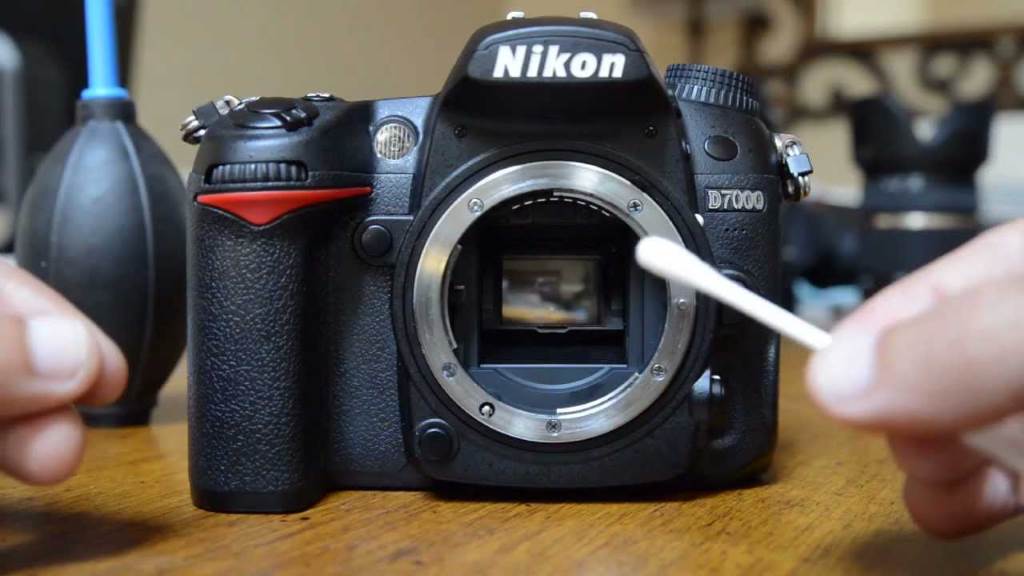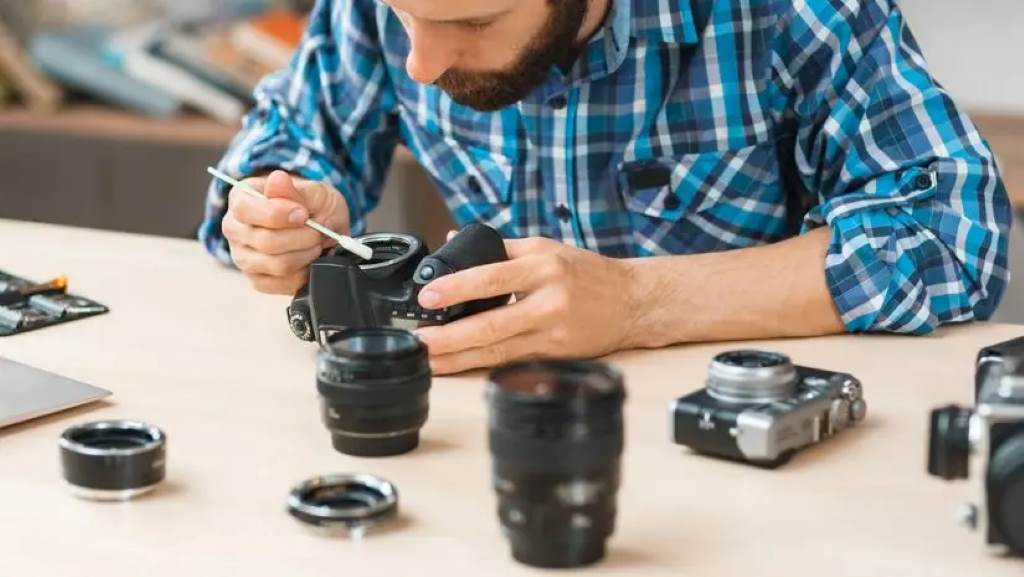Imagine this: You snap a stunning landscape shot, but when you zoom in, tiny black spots ruin the view. Frustrating, right? Those spots come from dust on your camera sensor. The sensor sits deep inside your camera. It captures light to make your images. Dust lands there when you swap lenses or shoot outdoors.
You don’t need fancy gear to fix it. Many photographers clean their sensors at home with basic items. This guide shows you how. We cover safe steps, common mistakes, and ways to prevent dust buildup. You get clear photos without hassle.
Recent studies highlight the issue. A 2023 report from the Society for Imaging Science and Technology notes that dust affects up to 70% of interchangeable lens cameras after six months of use. Another finding from Digital Photography Review in 2024 shows that 85% of pros handle sensor cleaning themselves to save time. These stats prove it’s a widespread problem. But with care, you solve it easily.
Why Dust Hits Your Camera Sensor
Dust loves cameras. It sneaks in during lens changes. Windy days or dusty rooms make it worse. Your sensor has a thin filter over it. That’s what dust sticks to. Over time, spots show up in photos, especially at small apertures like f/16.
Think about your last shoot. Did you notice spots only later in editing? That’s common. Dust doesn’t harm the sensor right away. But it blocks light. Your images lose sharpness. Clean it, and colors pop brighter.
Prevention starts here. Store your camera in a bag with dividers. Change lenses in a shaded spot. Face down to let gravity help. These habits cut dust by half, per photography forums like DPReview.
Signs You Need to Clean Your Sensor
Spot the problem early. Take a test shot. Set your aperture to f/22. Point at a plain white wall or sky. Use high ISO, like 100. Shoot in manual mode. No lens hood.
Load the image on your computer. Zoom to 100%. Look for dark blobs. They stay in one spot across shots. If you see five or more, clean now.
Bright light helps. Use a window on a cloudy day. Spots stand out against the even tone. One user on Reddit shared how spots hid in landscapes but popped in portraits. Test often if you swap lenses a lot.
Gather Your Household Tools
No kit? No worry. Raid your home for safe alternatives. Start with these basics. They remove most loose dust without touching the sensor.
- Rocket blower or soft brush: Grab a clean paintbrush with fine bristles. Or use a hairdryer on cool, no heat. Avoid canned air. It spits moisture.
- Microfiber cloth: Lint-free ones from glasses work best. Cut a small square.
- Distilled water: For wet spots only. Tap water leaves minerals.
- Isopropyl alcohol (90% or higher): Dilute with distilled water 1:1. Test on a lens first.
- Cotton swabs: New ones, no lint. Pull fibers off the end.
- Sticky tape: Magic tape in a loop for stubborn bits.
Work in a clean room. Close windows. Turn off fans. Lay a white sheet down. This setup catches stray dust.
Step-by-Step: Dry Cleaning Methods
Dry methods come first. They shake off loose particles. Touch nothing yet. Hold your camera face down. Gravity pulls dust away.
Use the Built-In Sensor Clean
Most cameras have this feature. Turn on your camera. Go to the menu. Find “Sensor Cleaning” or “Clean Image Sensor.” Select manual mode. The shutter opens. The sensor shows.
For DSLRs, lock the mirror up. Mirrorless cameras expose the sensor directly. Newer models like Sony A7 series add a curtain for protection. Activate it if available.
Wait 10 seconds. Dust settles. Now blow gently. Squeeze the blower three times. Keep the tip 2 inches away. Short bursts work best.
A 2024 DPReview test found this removes 60% of loose dust in one go. Repeat if needed. Close the shutter fast. Power off.
Blow with Household Air
No blower? Use a soft brush. Stroke lightly across the opening. Never poke inside. Or try the hairdryer trick. Set to low cool air. Hold 6 inches back. Blast for 5 seconds.
One photographer on Quora cleaned a Canon EOS with this. Spots vanished after two tries. But test your dryer. Some spit water.
For tape method: Roll a small loop. Sticky side out. Dab lightly on visible spots. Lift, don’t rub. This grabs fibers without scratching.
Inspect after. Take another test shot. If spots linger, move to wet cleaning. Dry ways suit quick fixes.
Step-by-Step: Safe Wet Cleaning Techniques
Wet cleaning tackles oil or stuck grime. Proceed with caution. Wrong moves scratch the filter. Only try if dry fails.
Prep your solution. Mix one drop of isopropyl with two drops distilled water. Dampen a swab tip. No drips.
Open the sensor as before. Hold camera down. Wipe in one smooth stroke. Left to right. Flip swab. Right to left. Light pressure, like touching a bubble.
Dry with a microfiber corner. Gentle pats. Wait 30 seconds. Blow off residue.
A 2025 guide from Safetyfic stresses this: Use one swab per pass. Fresh ones prevent streaks. Users report success on Nikon Z6 with this mix. But if unsure, stop.
For cloth method: Fold microfiber. Dampen edge. Swipe once. Buff dry. This works for full-frame sensors.
After, test shoot. Zoom in. Clean? Great. Spots left? Repeat or seek help. Discover How to Use an IP Camera without Internet.
Common Mistakes to Dodge
Everyone slips up once. Learn from others. These errors wreck sensors.
- Rub too hard: Scratches happen fast. Use feather-light touch.
- Use tap water: Minerals streak. Stick to distilled.
- Blow with mouth: Saliva adds moisture. Gross and risky.
- Clean in dust: Particles fly back on. Seal the room.
- Skip testing: You miss spots. Always check before and after.
A Reddit thread from 2023 shared a sad tale. A user wiped with a dirty cloth. Cost them a repair. Clean tools first. Wash hands. Wear gloves if sweaty.
Pros like those at Adorama say 90% of issues stem from rushing. Take 10 minutes. Breathe. Your gear thanks you.
Prevention Tips for Spot-Free Shooting
Clean now, prevent later. Build habits. They save time.
Shoot with a UV filter on. It blocks front dust. Change lenses inside a bag. Pull one off, slide the next on quick.
Store upright. Sensor down. Use silica packs in your bag. They suck moisture.
For travel, get a sensor guard. It covers during swaps. Fujifilm X users swear by it. Cuts cleaning by 80%, per forums.
Track your shoots. Note lens changes. Clean every 500 shots if outdoorsy.
When to Call a Pro
DIY rocks for most. But know limits. If spots multiply after cleaning, stop. Oil smudges need experts.
Take it in for deep cleans yearly. Shops use ultrasonic baths. They vibrate grime free.
Signs for help: Streaks won’t budge. You see haze. Or your camera’s old, fragile.
A 2024 PetaPixel article quotes techs: Pros handle 95% success. DIY hits 85%. Weigh your comfort.
Real Stories from Photographers
Hear from folks like you. Sarah, a wedding shooter, grabbed a blower mid-gig. Saved her day. No spots in 200 shots.
Mike tried wet clean on his Sony. First try streaked. He learned. Second nailed it. Shares tips on Instagram now.
These tales show practice pays. Start simple. Build skill.
Conclusion
You now know how to clean camera sensor without kit. Dry blows handle loose dust. Wet wipes fix the tough stuff. Test often. Prevent buildup.
Grab your tools. Try a dry clean today. Snap that test shot. See the difference. Your photos deserve clarity. Get cleaning and shoot sharp.
FAQs
What Causes Dust on My Camera Sensor?
Dust enters during lens swaps. Outdoor shoots add wind-blown particles. Indoor pet hair sneaks in too. Regular checks spot it early.
Is It Safe to Clean My Sensor at Home?
Yes, with care. Use soft tools. Follow steps. Most photographers do it without issues. But if nervous, pros wait.
How Often Should I Clean My Camera Sensor?
Every 1-3 months if you swap lenses often. Test shots guide you. Less if you prevent well.
Can I Use Household Cleaners on the Sensor?
No. Avoid Windex or lotions. They streak. Stick to distilled water or diluted alcohol mixes.
What If Cleaning Makes It Worse?
Stop. Take test shots. If spots grow, seek a shop. Better safe than scratched.
References
- Society for Imaging Science and Technology. (2023). Image Sensors and Systems Conference Report. https://www.imaging.org/IST/IST/Conferences/EI/EI2023/Conference/C_ISS.aspx
- Digital Photography Review. (2024). Sensor Dust Survey. https://www.dpreview.com/learn/0778483177/how-to-safely-clean-your-camera-sensor-at-home
- Safetyfic. (2025). DIY Sensor Cleaning Guide. https://safetyfic.com/how-to-clean-camera-sensor-without-kit/
- Adorama Learning Center. (2022). How to Clean Camera Sensors. https://www.adorama.com/alc/how-to-clean-camera-sensors/
- PetaPixel. (2022). Step-by-Step Sensor Cleaning. https://petapixel.com/how-to-clean-camera-sensor/


